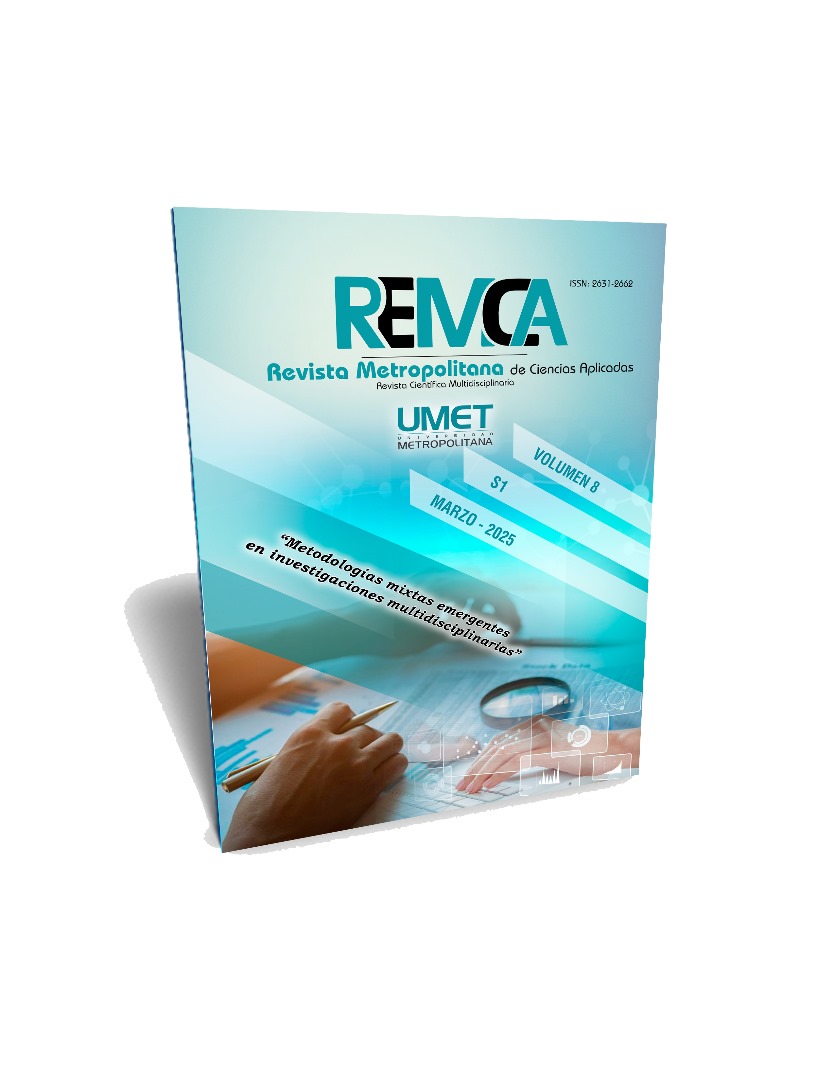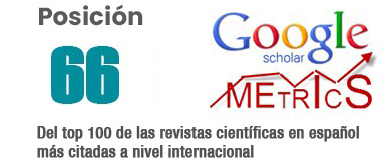Impact of water stress on corn (Zea mays L.) yield in Mocache, Ecuador
DOI:
https://doi.org/10.62452/56nmf451Keywords:
Biophysics, water efficiency, water stress, corn, yieldAbstract
This study evaluated the impact of deficit irrigation on maize development. A randomized complete block design with four irrigation levels was used during the dry season: T1 (40% ETc), T2 (60% ETc), T3 (80% ETc), and T4 (100% ETc). No significant differences were found in the number of leaves per plant. In the first 45 days, water deficit did not affect plant height, but by 60 days, T4 achieved the greatest height (1.98 m), followed by T2 (1.72 m). Stem diameter showed a similar pattern, with T4 (17.10 mm) and T2 (15 mm) standing out at 60 days. The highest yield was obtained with T4 (16.68 t ha⁻¹), followed by T3 (14.75 t ha⁻¹). T4 exhibited a 13.14% reduction in height and a 12.28% reduction in stem diameter compared to T2, with a 40% water saving. T1 showed the highest water use efficiency (14.04 kg/m³), while T4 had the lowest (7.19 kg/m³). Although T4 yielded more, T1 was more efficient in water use.
Downloads
References
Alghory, A., & Yazar, A. (2019). Evaluation of crop water stress index and leaf water potential for deficit irrigation management of sprinkler-irrigated wheat. Irrigation Science, 37(1), 61–77. https://doi.org/10.1007/s00271-018-0603-y
Analuisa-Aroca, I. A. (2023). Nodos de la agricultura familiar dedicada al maíz amarillo en Manabí, Ecuador. Hatun Yachay Wasi, 2(1), 109–120. https://doi.org/10.57107/hyw.v2i1.40
Caviedes, G. M. (2019). Producción de semilla de maíz en el Ecuador: retos y oportunidades. ACI Avances En Ciencias E Ingenierías, 11(1), 116–123. https://doi.org/10.18272/aci.v11i1.1100
Celi, F., Pineda, D., & Cobos, C. (2023). Relación costo – beneficio de la producción de maíz duro de los cantones Celica, Pindal y Zapotillo, provincia de Loja. Opuntia Brava, 15(4), 231-241. https://opuntiabrava.ult.edu.cu/index.php/opuntiabrava/article/view/1983
Chen, Y., Marek, G. W., Marek, T. H., Gowda, P. H., Xue, Q., Moorhead, J. E., Brauer, D. K., Srinivasan, R., & Heflin, K. R. (2019). Multisite evaluation of an improved SWAT irrigation scheduling algorithm for corn (Zea mays L.) production in the U.S. Southern Great Plains. Environmental Modelling & Software, 118, 23-34. https://doi.org/10.1016/j.envsoft.2019.04.001
Geerts, S., & Raes, D. (2009). Deficit irrigation as an on-farm strategy to maximize crop water productivity in dry areas. Agricultural Water Management, 96(9), 1275-1284. https://doi.org/10.1016/j.agwat.2009.04.009
González-Osorio, B. B., Saá-Yánez, L. M., Simba-Ochoa, L. F., Barragán-Monrroy, R., & Cadme-Arevalo, M. L. (2022). Vegetación riparia y la calidad del recurso hídrico en la zona centro del litoral ecuatoriano. Terra Latinoamericana, 40. https://doi.org/10.28940/terra.v40i0.1070
Guamán Guamán, R. N., Desiderio Vera, T. X., Villavicencio Abril, Á., Ulloa Cortázar, S. M., & Romero Salguero, E. J. (2020). Evaluación del desarrollo y rendimiento del cultivo de maíz (Zea mays L.) utilizando cuatro híbridos. Siembra, 7(2), 47–56. https://doi.org/10.29166/siembra.v7i2.2196
Gutiérrez-Guzmán, U. N., Ríos-Vega, M. E., Núñez-Hernández, G., Esquivel-Romo, A., Vázquez-Navarro, J. M., & Anaya-Salgado, A. (2022). Producción de maíz forrajero con dos sistemas de riego y tres niveles de la evaporación aplicada. Revista Mexicana de Ciencias Agrícolas, 13(SPE28), 263-273. Recuperado de https://www.scielo.org.mx/scielo.php?pid=S2007-09342022001000263&script=sci_arttext
Kirda, C. (2002). Deficit irrigation scheduling based on plant growth stages showing water stress tolerance. https://www.fao.org/4/y3655e/y3655e03.htm
León Mejía, A., Arzube Mayorga, M., Orrala Borbor, N., & Drouet Candell, A. (2020). Efecto del riego deficitario controlado en el cultivo de pimiento (Capsicum annuum L.) utilizando la tina de evaporación clase A, en Río Verde, Santa Elena, Ecuador. Journal of Science and Research, 5(1), 114–124. https://revistas.utb.edu.ec/index.php/sr/article/view/765
Mendoza-Pérez, C., Sifuentes-Ibarra, E., Ojeda-Bustamante, W., & Macías-Cervantes, J. (2016). Response of surface-irrigated corn to regulated deficit irrigation. Ingeniería Agrícola y Biosistemas, 8(1), 29-40. https://doi.org/10.5154/r.inagbi.2016.03.001
Miri, S., Alizadeh, H. A., Alizadeh, Y., & Amini, E. (2024). Water use efficiency of maize-mung bean in intercropping systems under different water stress conditions. Water and Soil Management and Modeling, 4(1), 233-247. https://journal.uma.ac.ir/article_2104_d881cd466f9e921df449ba689684b758.pdf
Nikolaou, G., Neocleous, D., Christou, A., Kitta, E., & Katsoulas, N. (2020). Implementing sustainable irrigation in water-scarce regions under the impact of climate change. Agronomy, 10(8). https://www.mdpi.com/2073-4395/10/8/1120
Payero, J. O., Melvin, S. R., Irmak, S., & Tarkalson, D. (2006). Yield response of corn to deficit irrigation in a semiarid climate. Agricultural Water Management, 84(1-2), 101-112. https://doi.org/10.1016/j.agwat.2006.01.009
Sáez-Cigarruista, A., Morales-Guevara, D., Gordon-Mendoza, R., Jaén-Villarreal, J., Franco-Barrera, J., & Ramos-Manzané, F. (2024). Sensibilidad del cultivo de maíz (Zea mays L.) a diferentes períodos de déficit hídrico controlado. Agronomía Mesoamericana, 35(1). https://doi.org/10.15517/am.2024.55660
Sánchez Mera, M. B., Urdánigo Zambrano, J. P., & Toscano Alvarez, D. K. . (2023). Plantas invasoras en cultivares de maíz (Zea mays L.) bajo escenarios de cambio climático en la provincia Los Ríos, Ecuador. Ciencia Y Tecnología, 16(2), 49–58. https://doi.org/10.18779/cyt.v16i2.757
Sánchez, D. K. (2019). Efecto de la poliacrilamida en el rendimiento y volumen de riego en maíz (Zea mays L.) var. opaco mal paso irrigación Majes. (Tesis de pregrado). Universidad Nacional de San Agustín de Arequipa.
Tapia, R., León, R., & Torres, C. (2022). Riego deficitario y densidad de siembra en indicadores morfofisiológico y productivos de híbrido de maíz. Revista ESPAMCIENCIA, 12(2), 131-140. https://doi.org/10.51260/revista_espamciencia.v12i2.269
Downloads
Published
Issue
Section
License
Copyright (c) 2025 Marlon Fernando Monge-Freile, Génesis Yamileth Bustamante-Saltos, Belén Estefanía Simbaña-Cifuentes, Katiuska Carolina Molina-Yépez (Autor/a)

This work is licensed under a Creative Commons Attribution-NonCommercial-ShareAlike 4.0 International License.
Authors who publish in Revista Metropolitana de Ciencias Aplicadas (REMCA), agree to the following terms:
1. Copyright
Authors retain unrestricted copyright to their work. Authors grant the journal the right of first publication. To this end, they assign the journal non-exclusive exploitation rights (reproduction, distribution, public communication, and transformation). Authors may enter into additional agreements for the non-exclusive distribution of the version of the work published in the journal, provided that acknowledgment of its initial publication in this journal is given.
© The authors.
2. License
The articles are published in the journal under the Creative Commons Attribution-NonCommercial-ShareAlike 4.0 International License (CC BY-NC-SA 4.0). The terms can be found at: https://creativecommons.org/licenses/by-nc-sa/4.0/deed.en
This license allows:
- Sharing: Copying and redistributing the material in any medium or format.
- Adapting: Remixing, transforming, and building upon the material.
Under the following terms:
- Attribution: You must give appropriate credit, provide a link to the license, and indicate if any changes were made. You may do this in any reasonable manner, but not in any way that suggests the licensor endorses or sponsors your use.
- NonCommercial: You may not use the material for commercial purposes.
- ShareAlike: If you remix, transform, or build upon the material, you must distribute your creation under the same license as the original work.
There are no additional restrictions. You may not apply legal terms or technological measures that legally restrict others from doing anything the license permits.




